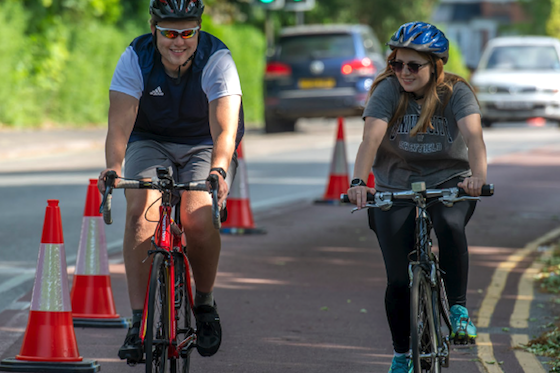Leicester City Council has carried out works around the DMU campus and nearby Braunstone Gate as part of a programme of temporary changes to give more priority to cycles and pedestrians.
As lockdown eases and non-essential shops and bars start to re-open, one-way traffic systems and parking restrictions are being brought in to help people to get about while maintaining social distancing.
The Leicester Mercury reported this week that the new transport schemes could become permanent.

A one-way system is in place meaning traffic can access Mill Lane and Grasmere Street from Western Boulevard and Jarrom Street, but not in the opposite direction.
A signed diversion route is provided via Jarrom Street, Havelock Street and Walnut Street.
On Upperton Road and Western Boulevard, a two-way cycle route has been introduced between the pedestrianised section of Mill Lane and the cycle routes across Bede Park and beyond.
Braunstone Gate will see a pop-up 'Mini Holland' by limiting vehicle access and closing the road to unnecessary traffic. On-street parking will be removed to allow wider pavement areas to help visitors to shops, bars and cafés maintain two-metre social distancing as businesses re-open.
- This scheme restricts access from Duns Lane and New Parks Street into Braunstone Gate to buses, taxis and cycles only, and removes the left turn from Western Boulevard into Braunstone Gate, except for cycles
- Traffic coming from the Narborough Road end will also have to give way to oncoming traffic travelling south
- An advisory 20mph zone is being introduced in the area
- Businesses can apply for street café licences and outside seating areas in the space created by the removal of parking.
The schemes aim to improve the network of cycling and walking routes connecting the city centre, Bede Park and the DMU campus. They are part of Leicester's COVID-19 Transport Recovery Plan to help Leicester's economy, businesses and transport recover from the impact of months of lockdown restrictions.
Published by the council at the end of May, the plan sets out the priorities for helping boost the city's economy and health while making the most of opportunities to encourage more sustainable transport choices.
Initially, it will be a temporary scheme but if the changes prove successful they could become permanent in the future.
The Leicester Transport Recovery Plan can be viewed in full here.
Image credit: Leicester City Council
Posted on Thursday 11 June 2020